A healthy and vibrant lawn doesn’t just look good, it’s important to the environment, feels nice to walk and play on, will pique interest from friends and neighbours, and it’s really satisfying to know that you put in the effort and can see the results.

It’s not difficult keeping a lawn in tip-top condition either. It does take a little more than just a rake and a good lawn mower. However, with all the benefits outlined above it’s more than worth that little extra effort to have a lawn you can be proud of and the whole family can enjoy.
Some of the benefits to keeping your lawn in top condition include:
[su_list icon=”icon: check” icon_color=”#45bf55″]
- Providing a space for your family to enjoy
- Increasing the value and saleability of your property
- Benefits the environment and the ecosystem in your yard
- It’s a fun and active outdoor hobby
[/su_list]
You have to approach lawn care differently depending on the season, or more accurately, the weather where you live. Below I have put together a guide outlining the how to care for your lawn during each season. Properly maintaining your lawn leading into each season will ensure your lawn maintains the best possible condition.
Lawn Care Ultimate Guide for Year Round

Shared the Infographic via J&I Power Equipement
Fall (September – December)
It’s important to take good care of your lawn during the months of fall. This is your chance to use the last of good weather to get your lawn into top condition before a harsh winter comes. All your efforts during these months will pay off next year, below is everything you need to know to make the most of the fall months.
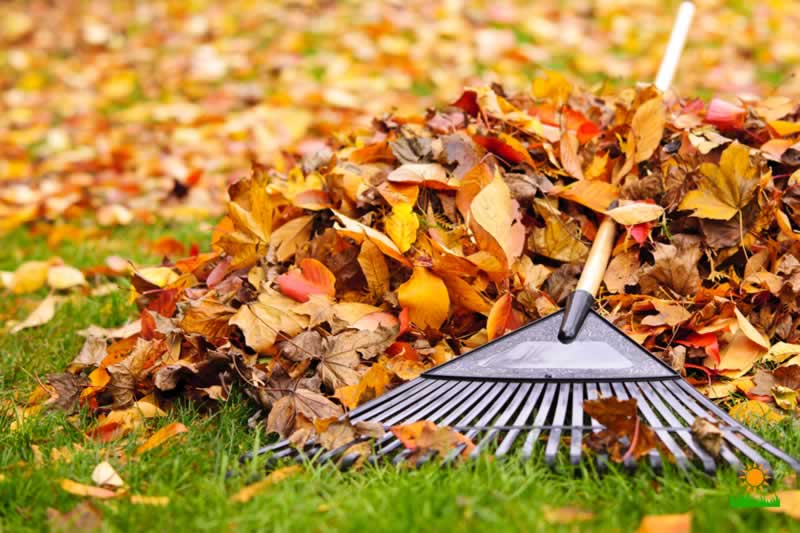
Feeding and Fertilizing during Fall
Lawn feed in the fall with give your lawn the nourishment it needs to survive the winter. Fall tends to be damp in most areas and the constant damp can take its toll on a lawn. Providing some high quality nutrients will give your lawn the lift it needs.
Pick up a lawn feed that’s been formulated for the fall season. You need a feed that is formulated to build strong roots and combat weeds going into the winter season. These feeds also improve your lawn’s natural absorption ability and will give you that bright, fresh green look.
Mowing Your Lawn during Fall
As the months draw on you will need to mow your lawn less. The days become shorter, there is less sunlight, and your lawn will slow. If you have a depth setting on your mower raise it a little to leave your lawn slightly longer as winter approaches.
Seeding Throughout Fall
Unless your lawn is in tip-top condition you may want to overseed it heading into winter. Seed can still germinate and flourish, filling out any patches before winter comes.
Additional Fall Lawn Care Tips
Keep your lawn free from leaves – A leaf blower is going to be your best friend through the months of fall. Trees will be shedding their leaves and if you leave them it’s not only unsightly it can attract pests and cause damp spots on your lawn.
Aerate any dry patches – Use a fork or some other sharp tool to spike some holes in any areas that look like they are dry spots. This increases the drainage and allows more air into the soil and roots of the lawn.
[su_box title=”Winter (December – March)” box_color=”#45bf55″]
Whether you’re a casual or enthusiastic gardener, winter is a frustrating time. There isn’t a lot to do in the garden and your lawn will be too hard or damp to work with. There are a few things you can do to keep your lawn in the best possible condition and prepare for spring however, the following covers everything you need to know.
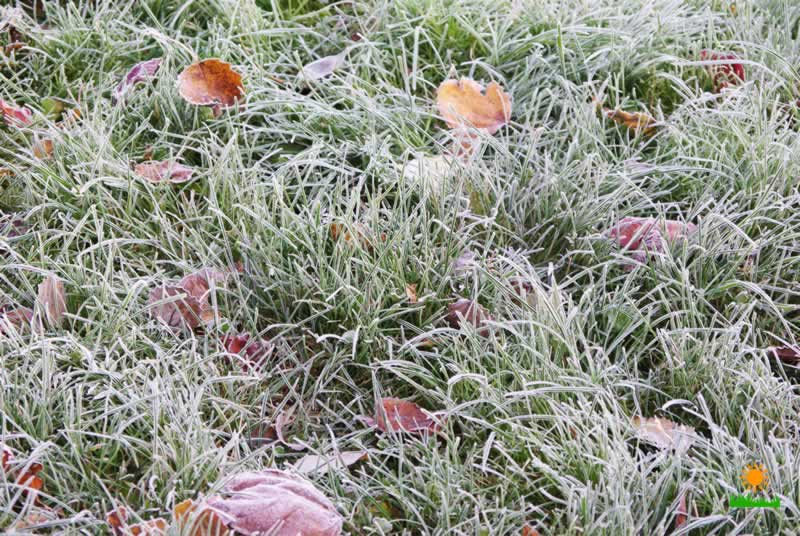
Feeding and Fertilizing during Winter
You will not need to feed your lawn during the winter months. Unfortunately there is not a lot you can do when the ground is frozen or close to freezing point. Wait out these months until spring before you can start working on your lawn again.
Use a good quality winter lawn feed as per the manufacturer’s instructions.
Winter feeds are formulated to strengthen and protect the roots so your lawn will survive a harsh winter. You will not need to treat your lawn as often during winter, typically once a month will be enough.
Mowing Your Lawn during Winter
You are not going to need to mow your lawn very often, if at all. It depends how mild the winter is where you live. Keep your lawn around 20-25% higher than in summer, and only mow your lawn if it’s dry.
Seeding Throughout Winter
You will not be seeding during winter. It’s likely to be too cold for any new grass to germinate and it’s just not necessary. Keep an eye on the areas you want to repair and wait until spring to start seeding and repairing your lawn.
Additional Winter Lawn Care Tips
[su_list icon=”icon: check” icon_color=”#45bf55″]
- Stay off your lawn – The best thing you can do is stay off your lawn as much as possible during winter. Grass doesn’t repair well during the winter months and if you walk over the same parts most days it will soon become flat and damaged.
[/su_list]
[su_list icon=”icon: check” icon_color=”#45bf55″]
- Blow loose leaves or snow away – You also need to use that leaf blower in winter to blow away the leaves still falling at the end of fall. If it snows where you live then a snow blower will do the job. Leaving snow on your lawn traps moisture and can cause disease and increased insect activity.
[/su_list][/su_box]
Spring (March – June)
Spring is the season where you really need to spend special attention to your lawn. Winter is now behind you and your lawn is going to start to flourish. Giving your lawn the kind of care it requires now is vitally important if you’re going to have a luscious, green lawn develop over the following months.
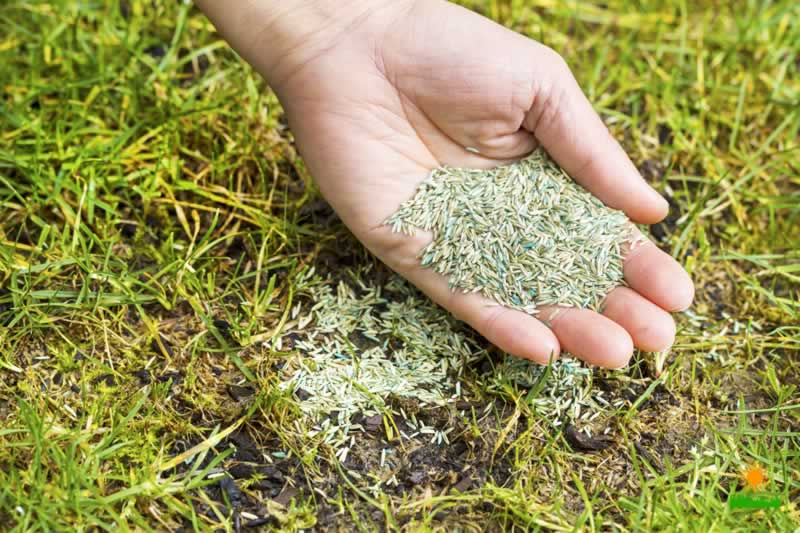
Feeding and Fertilizing during Spring
Your lawn is going to require a lot of nutrients during the spring months. A common mistake is to think that your lawn will get enough of these nutrients from rainwater and the soil. If you want a vibrant and full lawn you need to use some lawn food.
Use a proprietary spring fertilizer that’s high in nutrients. You can use spring fertilizers up until August but not after. Try and apply in moist conditions and add some water to the topside. Take action at the first signs of any moss or weeds popping up too. Catching weeds early is vital as they will be feeding off your lawn food and sapping some of the life out of the soil.
See these tricks to fix white-grass in the Spring.
Mowing Your Lawn during Spring
You will notice your lawn starting to ‘spring’ into life, in spring. You need to start mowing the lawn early to stimulate more growth, but it’s important to set your mower to a high cutting setting so you don’t cut too low.
You only want to trim your lawn, with little and often being the key as opposed to infrequent low cuts.
Seeding Throughout Spring
By looking at the condition of your lawn you will be able to identify areas in need of some seeding. Don’t be afraid to overseed at the beginning of spring as it’s better to have a fuller lawn than a thinner one and the seeds will germinate easily.
If you have an uneven lawn then top dressing will smooth out these areas and give you a lovely smooth and even lawn surface. Take note of the mowing guidance above and keep trimming the tops off the newer grass to develop an even lawn surface.
Additional Spring Lawn Care Tips
Aerate dense patches in your lawn – Aerating is a process in which you spike the ground with a fork to allow more air and drainage into the soil. If you have any firm or dense areas in your lawn air out these areas to improve the drainage and quality of the grass.
Killing weeds – Weeds stick out instantly on a well maintained lawn and there is no greater enemy to your precious lawn. Use weedkiller sparingly and check it’s not going to damage your lawn. If you’re dealing with weeds by hand by sure to pull out the entire root.
[su_box title=”Summer (June – September)” box_color=”#45bf55″]
Summer is the season when you are going to get the most enjoyment out of your lawn. Long, dry summers however can take their toll on lawns. As can a lot of foot traffic if you have children playing or you host garden parties. It’s not difficult to maintain your lawn in the summer when you know what to do, the following tips will cover everything you need to know.
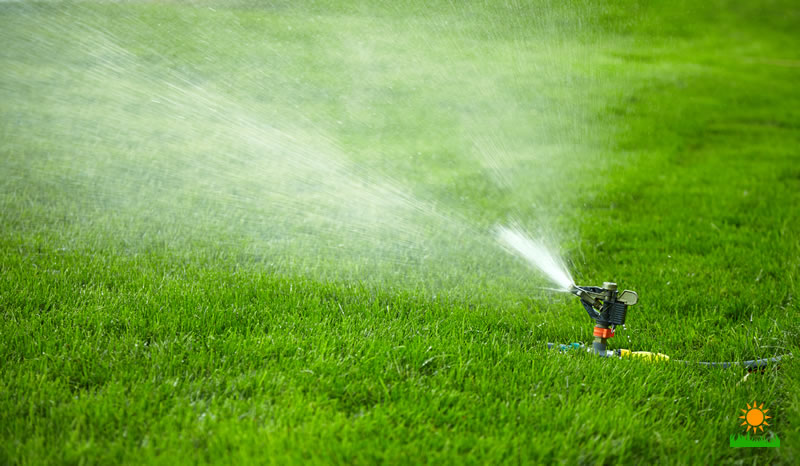
Feeding and Fertilizing during Summer
How often and how much you feed your lawn during the summer depends on the weather where you live. If you have showers on and off then you will not need to add much food, focus more on mowing and maintaining what you have. If you have a long, dry summer, then you will need to help with food and nutrients to keep your grass healthy.
There are summer lawn treatments that are specifically formulated to withstand a dry summer. These feeds are best applied when the soil is moist after being watered but the grass is dry. It’s more coarse than a spring feed, but using the correct feed makes a huge difference to the results.
Mowing Your Lawn during Summer
You will notice you need to mow your lawn less during the summer, this is normal and no matter how tempting it is –never mow more than a third off the length off your grass at a time. If it’s been a particularly arid summer give new seeds plenty of time to flourish in between cuts.
Seeding Throughout Summer
You shouldn’t need to seed much during the summer, unless you’re extending your lawn or repairing some patches. If you do need to seed then use top dressing to smooth out your lawn for that consistent, level look.
Additional Summer Lawn Care Tips
[su_list icon=”icon: check” icon_color=”#45bf55″]
- Watering – The biggest issue lawns face during the summer is lacking moisture to stay healthy. If you have a well-maintained lawn it will almost always fully recover from patches of drought, but keeping on top of watering your lawn should be a priority.
[/su_list]
Any signs of yellowing or dulling in your lawn means it’s lacking moisture. Sprinkler systems are great for an even distribution of water, and watering at night gives your lawn more time to absorb the moisture.
[su_list icon=”icon: check” icon_color=”#45bf55″]
- Dealing with insects – Summer insects and pests can be a real problem to the quality of lawns. If you notice patches of your lawn becoming damaged, inspect the area and look for signs of insects feeding on your grass. Use the appropriate treatments depending on the type of insect.
[/su_list][/su_box]
Lawn Care Tools to Make Your Life Easier
Edging Iron
Edging irons are tools that allow you to cut straight lines into your lawn and as the name suggests, edges. Straight lines always gives the impression of a tight, and tidy lawn. You can even get creative and cut shapes into a lawn and work your way around ornaments and flower beds.
Lawn Mower
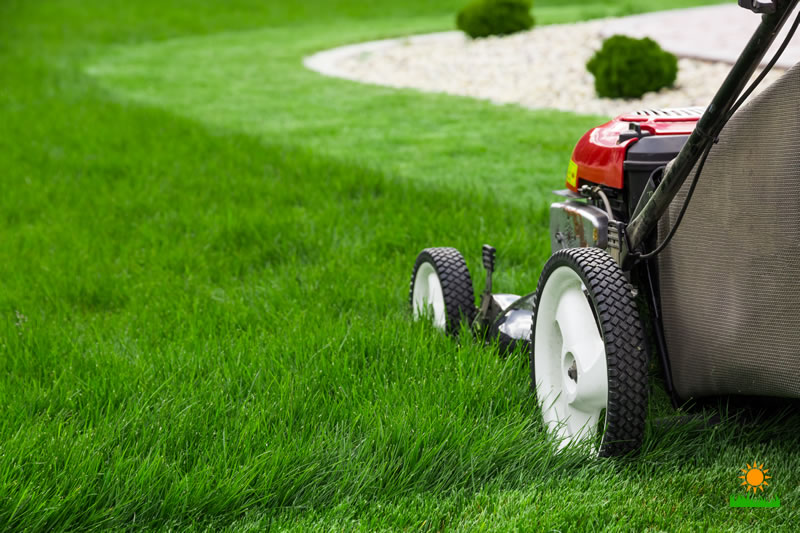
Investing in a good lawn mower is going to pay you back over the years. Some say a lawn is only as good as the mower and it’s true to a point. If you want to leave those stripes you see on award winning lawns then choose one with a roller. Buying the best mower your budget stretches to is a good start.
Hose or Sprinkler
Water is one of the main elements for a healthy lawn. Some people prefer to have a sprinkler on a timer, while others like to walk around with a hose so they can inspect their lawn. Either way, one of both of these items are essential.
Leaf Blower and Rake
Keeping dead leaves off your lawn can feel like a losing battle at times. A leaf blower makes removing leaves incredibly easy. I always keep a rake to hand too so I can collect all the leaves in a pile and remove them.
Feed Spreader
Feed spreaders are small troughs on wheels that distribute lawn feed or seeds evenly as you walk around. It makes covering large lawns quick and easy and helps you to achieve that even look.
In Summary
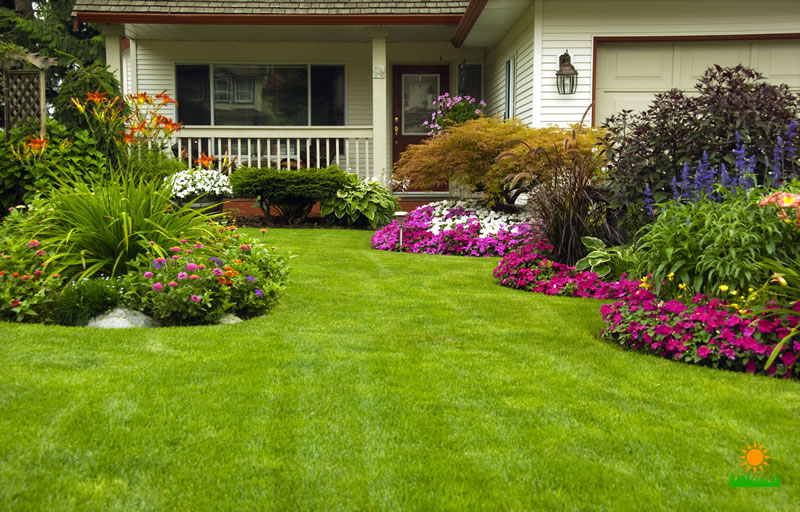
I hope this article has helped you to understand that it’s not as difficult as you may have thought to create and maintain a luscious, green lawn. With just a few simple tools as outlined above, the correct knowledge, and some enthusiasm, it’s really not difficult at all – and incredibly satisfying.
The key is to maintain your lawn all year round and keep weeds away regularly. Following the guidelines for each season and making the necessary adjustments makes a huge difference. Once you have a healthy lawn it’s a lot easier to maintain it than it is to start from scratch.
If you have any questions about this article or any tips to add please drop me a comment and I’ll be happy to respond, thanks!
